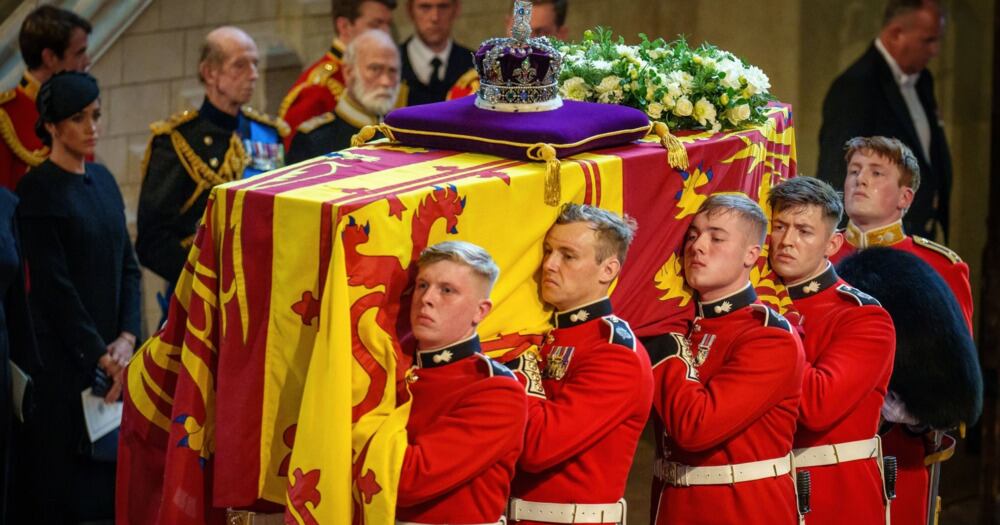Queen Elizabeth II’s burial was a spectacle watched worldwide. The United Kingdom has mourned the death of many monarchs, but this burial seemed unique, partly because it was the first royal burial in seventy years. Many people who watched the ceremony weren’t alive when King George VI, Queen Elizabeth II’s father, passed away in 1952.
Therefore, people had several inquiries about the intricacies of royal burials, including the design of the Queen’s coffin. The coffin needed eight military men to carry, suggesting it was pretty heavy. How heavy, you ask? A lot heavier than most coffins, that’s for sure.
Queen Elizabeth’s coffin weighed between 550 lbs and 700 lbs due to its lead lining

Queen Elizabeth’s coffin weighed at least 550 lbs due to its lead and oak construction. JH Kenyon Ltd. of London made the casket thirty years ago using English oak, a rarity nowadays, according to Andrew Leverton.
Leverton & Sons took over from JH Kenyon in 1991 and inherited maintenance of the coffin. Andrew Leverton, the firm’s owner, told The Times:
“It is made from English oak, which is very difficult to get hold of. Oak coffins are now made from American oak. I don’t think we could use English oak for a coffin now. It would be too expensive.”
Lining a coffin with lead is a royal tradition dating back to the Victorian era. Lead prevented moisture and air from getting into the coffin, which was crucial when people were laid to rest above ground. Matthew Lymn Rose, managing director of A. W. Lymn, the Family Funeral Service, told inews:
“Most people are buried underground. If you have a coffin vault or a family chamber in a church, then that coffin remains above ground and open to the elements. A sealed coffin is very important.”
Sealing the coffin using lead slows decomposition and prevents smells from leaking out of the casket. Lymn said lead-lined coffins weren’t reserved for the royals:
“Winston Churchill also had a lead-lined coffin, so it’s not only the Royal Family, but it does tend to be associated with a person’s social standing or status and the funeral director they choose. JH Kenyon, the royal undertakers until 1991 would have specialized in lead-lined coffins for this reason.”
Royal coffins are made early to prevent delays. Crafting a royal casket takes time and requires precision, justifying the decision to make them early. An essential part of such caskets is the brass fittings that clip regalia in place.
For instance, the Queen was buried with the Imperial State Crown, the sovereign’s Orb, and the sovereign’s Scepter. These additions contribute to the coffin’s weight, which can rise to as high as 700 lbs.
We are unlikely to see another royal casket as heavy as Queen Elizabeth II’s. Coffin makers have abandoned lead in favor of the lighter zinc. Lymn Rose said:
“The modern process would be to zinc-line [the coffin]. Zinc is much thinner than lead, and more malleable. I have never, in my 20 years, seen a coffin lead-lined. The process of zinc lining is more simple, less costly, less weighty.”